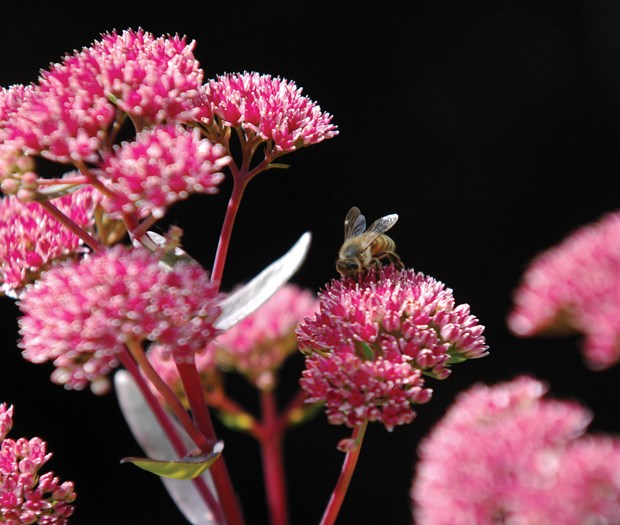This has been a great winter for watching crows digging up chafer beetle larvae in your lawn.
We have not had to travel, put on sunscreen and insect repellent, or buy expensive binoculars or cameras - the ultimate staycation! The downside is your lawn may look like someone had a few too many beers while using a rototiller.
Last year was the first big year for the chafers here on the Shore and, as yet, only in some neighborhoods. I noticed people getting on it right away, removing old lawns and replacing with new ones, and I wondered to myself how many years will they be willing to go to this expense for a new lawn. Many of these newly replaced lawns have already been destroyed. A more sustainable solution would be to convert turf grass areas to other uses. If one is not quite ready to take the plunge into losing the lawn, the destroyed areas could be used as a first step or experiment toward replacing the lawn with an alternative to turf grass.
A good first step is to assess the way the area is used; if the area is needed for a play space for children or pets, a sturdy, traffic-tolerant solution
will be needed. I have seen lawn seed mixes labelled as being unattractive to chafer beetles, but have had no reports on the results. White clover has been used in some areas around my neighborhood. It looked nice all summer, stayed low, did not need cutting, had lovely flowers and is maintaining a green cover this winter. My research leads me to believe that for best results it should be grown with grass as they are complementary in their ecological functioning and one supports the other. Another option is to create a perimeter planting area and use coarse sand mix or chips for the open play space. This combo is also appropriate when creating pathway areas in the garden. One of my favourite plants for edging a high-traffic area is Carex caryophyllea, 'The Beatles,' as it is a slow spreader, looks good all winter, and is shade and sun-tolerant.
Curbside areas are seldom needed for play, and as long as foot traffic along the street is not impeded, North Shore municipalities allow for planting these areas (height restrictions may apply) as long as structures are not built and site lines for traffic are not impeded. These are often good areas for drought-tolerant grasses and flowers enjoyed by pollinators. When choosing grasses, it is best to stick to low to medium height non-aggressive varieties. Some of my favourites are Chasmanthium latifolium (oat grass) with beautiful seed heads, Pennisetum oriental and Pennisetum alopecuroides 'Hamelin,' (fountain grasses), Molinia caeruliea 'Variegata' (moor grass) and an evergreen, Helictotrichon sempervirens (Blue oat grass). If shopping, be careful not to be seduced into a similar looking substitute, Lymus arenarius (Lyme grass) which, while a good seashore stabilizer, is very aggressive in garden soils. Flowers amongst grasses provide an attractive color and textural contrast as well as food for pollinating insects. Bees are among our most important pollinators, native plants attract native bees and exotic plants attract honeybees. Bees especially like blue, purple, violet, white and yellow flowers. Single flowers - those with one ring of petals - provide more nectar and pollen than double flowers. It is best to plant the flowers in clumps so they are easy for bees to find.
Echinacea purpurea (coneflower) is an attractant to swallowtail butterflies. I am always thrilled to watch them feed on the nectar of this native plant. Lupinus polyphyllus (Lupine) and Aquilegia formosa (our native Columbine) are examples of taller native plants attractive to bees. Tellima grandiflora (Fringe cup), Armeria maritima (Thrift), and Sedum spathulifolium (Stonecrop) are low growers that bees love.
For a more formal look, a cover of sub-shrubs or groundcovers often works well. One of my all-time favourite sub shrubs that is appropriate for shaded areas is Sarcococca humilis (Sweet box), an evergreen, flowering right now with beautifully scented white flowers. For the sun, Lavendula (lavender), also an attractant to bees, is a great choice, and Spiraea bumalda does a good job of providing cover with ample flowers. While deciduous, when the flowers are left on through the winter, it looks beautiful in the snow.
In my neighborhood, veggie gardens are frequently popping up street-side, taking advantage of full sun areas. Having used a neighbour's sunny area for a few years myself, I found it was a great way to meet my neighbours and share food and knowledge about plants.
It amazed me how many people had no idea what potato plants were! Potatoes are a good first crop for poor soil areas as they do a good job of breaking up hard soil.
If you start now, there is still time to do a sheet mulch garden for an easy no-till veggie garden this year. I understand that a lot of people are not interested in spending a lot of time growing food, but some crops such as kale are virtually maintenance-free, self seeding freely and provide fresh greens almost all year-round.
Whatever your approach to dealing with the aftermath of the chafer beetle, keep in mind that: one out of every three bites of your food depends on a pollinator; using treated drinking water to irrigate a lawn is no longer appropriate; growing food locally is a great way to increase our food security and reduce our dependence on foreign food imports; and, reducing lawn mowing with power tools helps create a quieter, healthier neighborhood.
Heather Schamehorn is a certified residential landscape designer and consultant, educator, habitat and sustainability advocate and dog lover. Email: [email protected]. Info: perennialpleasures.ca.



